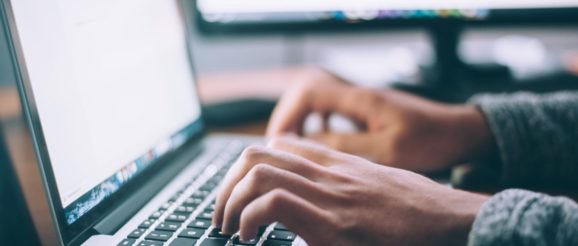Digital Mental Health for Workers: Unprecedented Times Call for Social Innovation | One Mind PsyberGuide

There was, prior to COVID-19, growing recognition of the increasing mental health and substance abuse problems in the U.S. workforce. Studies out of Stanford warned us of the negative impact of stressful working conditions and toxic work. The American Heart Association declared a “mental health crisis” and launched an initiative to identify evidence-based solutions. The International Foundation of Employee Benefits Plans documented increases in workplace mental health offerings in response to workplace stress.
COVID-19 not only highlights and exacerbates these factors, it offers the opportunity to catalyze much needed change. It may push workplace wellness programs to do a better job of incorporating innovative mental well-being solutions, including the numerous digital mental health (DMH) solutions that exist. Various sources (e.g., the Society of Human Resource Management, One Digital Heath, the American Institute of Stress and others) are encouraging employers to use technology to help workers address stress, isolation and anxiety. Indeed, many workers appear to be turning to DMH tools for the first time.
Putting DMH to the Test
Implementation of DMH through the workplace may put the science of DMH to the test. Between 2014 and 2018, the National Institutes of Health (NIH) invested about $138M in almost 400 research grants for DMH. However, it is not clear that this research will help in real-world settings, especially for the workplace. Regardless of changes in work norms (at-home, virtual, or tele-working), workers will continue to need tools that address the stressful and toxic working conditions that pre-dated COVID-19.
How DMH Can Help
With guidance on selecting DMH apps from One Mind PsyberGuide and the American Psychiatric Association, DMH solutions may help workers in five areas of relevance to COVID19: (1) depression; workers have lost their jobs, downsized, or otherwise had significant work adjustments; (2) anxiety; because of persistent uncertainty; (3) loneliness; due to isolation and especially for older workers who may be disconnected from family; (4) fatigue/burnout; especially for parents who are both working at home and caring for/schooling children; (5) substance abuse; and (6) post-traumatic stress disorder. Medical professionals at the front lines and military veterans in the workforce may be particularly vulnerable to all of these concerns.
Meta-analyses and reviews support the effectiveness of DMH in reducing depressive symptoms, anxiety, and stress. One recent study found positive outcomes for depression using mood tracking and goal setting functions. Other studies supported the effectiveness of Cognitive-Behavioral Therapy (CBT), particularly for improving feelings of social isolation, by promoting self-reflection and reframing cognitions around social networks. Bonding on social networking apps has also been linked to improvements in social isolation and loneliness. Earlier attempts showed Mobile CBT useful for grief counseling. Further, digital mindfulness solutions may reduce fatigue and burnout. Promising results from these and other studies, indicate the great potential for meeting worker mental health needs both during and after the COVID19 outbreak.
A Note of Optimism and A Call for Support
Studies in both China and the U.S. estimate 50% of the population report increased negative mental health effects due to COVID-19. The scope of the problem represents a pressing need for resilience skills. Recently, I asked over 300 facilitators of our own evidence-based resilience curriculum to comment on how this could happen. I received 30 in-depth responses and 15 of these practitioners presented their advice in an interactive webinar. The message they sent was clear:
People need, can, and will take the time with others now to use COVID-19 as an opportunity to find new ways to improve health (at home, with family, and community) – think, spend time, get together, etc.
Despite the pre-existing stressors that COVID-19 has exacerbated, these wellness providers see their clients innovating – on their own, in their homes, with diverse tools – to make the best of it. Developers of new DMH solutions might look to these common, homegrown, solutions and bring them to others in creative ways that only technology can devise.
This brief review shows that the world has many allies fighting for and supporting worker mental health. While mental health apps can be a part of this fight, findings suggest that personalized support improves DMH impact. Indeed, employers and their human resource and employee assistance providers are well-positioned to be these supporters. For them, easy-to-access DMH may be especially timely.
If you are interested in learning more about DMH solutions for the workplace, One Mind PsyberGuide have developed an Employer’s Guide to Digital Mental Health Solutions in collaboration with the Northeast Business Group on Health. The guide contains reviews of 27 available platforms, along with advice and guidelines for building your business case and implementing a solution. .
